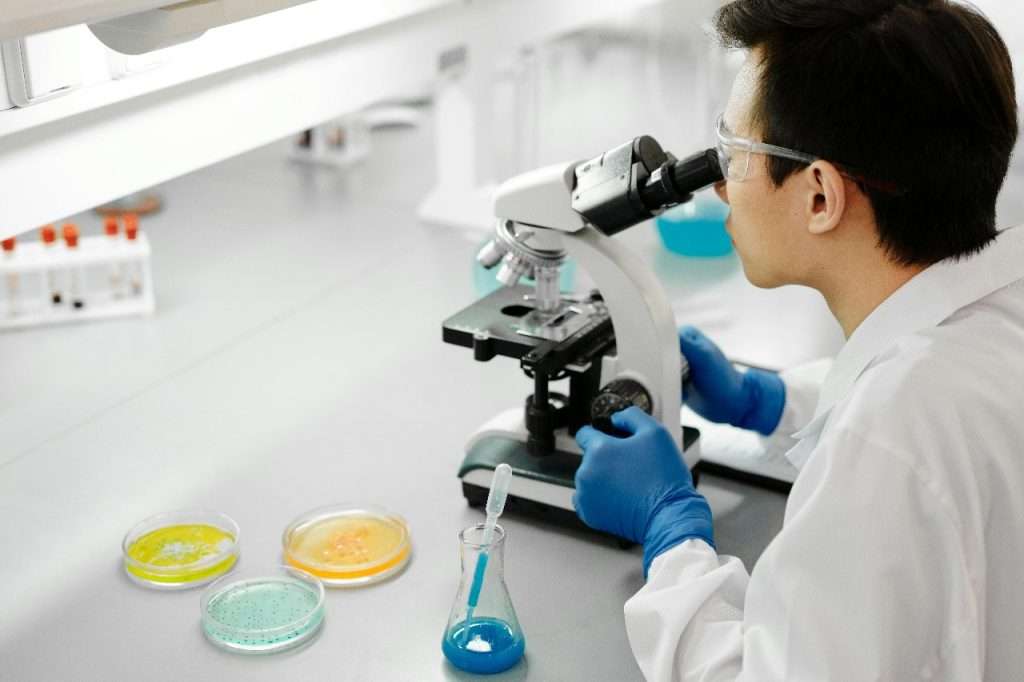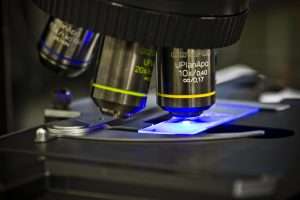Written by Microscope Hunt Authority
Jobs That Use Microscopes offer a fascinating look into the microscopic world and play a crucial role in science, healthcare, and research. Explore the hidden creatures around you with a microscope—watch tiny organisms come to life, learn how science works on a small scale, and even capture stunning close-up images.

Microscopes take many backs to biology classes in high school, where they might have gazed through a lens looking at onion cells. Though, the microscope goes far beyond being a mere teaching tool-it is a gateway to entire careers. Many jobs are built around the use of microscopes on a daily basis. These professions range widely in application-from the healthcare field, research, and forensic to manufacturing and environmental science. Each simultaneously holds an important position in uncovering the secret lives of the microscopic world and forging discoveries into something beneficial to society.
.
If you are a science fan, a student thinking of pursuing a career, or simply curious, it would be worth taking a look at the many different job professions involving the regular use of microscopes. Take some time to look at the discussed unique career paths and learn about what they entail.
Medical Laboratory Technicians and Technologists
Microscope is the essential equipment in the work of medical laboratory technologists or technicians. These medical workers are found in hospitals, clinics, and labs where they perform tests as necessary and use microscopes of high magnification to observe blood, tissue, and different body fluids. The medical professionals’ job is to diagnose diseases, find infections, and monitor health conditions of the patient.
Their use of microscopes helps them a lot in finding things like the cells, the viruses, or the parasites that the human eyes can not recognize because they are too small. Doctors get the information they need for an accurate diagnosis from those who are experts in the hospitals. Such a person apart from having extensive biology and chemistry knowledge should have a quick mind and be observant enough to achieve the best results for their task
Microbiologists: Peering Into the World of Microorganisms
Microbiology lines with a different spectacular vocation. Microbiologists mainly focus on the research of nonvisible organisms such as bacteria, viruses, fungi, and protozoa. Their responsibility is using the microscope to carry out experiments that help them determine the way these organisms live, grow, and interact with their surroundings.
In fact, a lot of microbiologists are employed in research laboratories, pharmaceutical companies, and even in different government sectors such as the CDC. There, their job is to do anything from studying infectious diseases to inventing new vaccines or providing various solutions to antibiotic resistance. The basis of all the things they do comes from the fact that they observe organisms through a microscope and because of this, it is one of the most research-intensive jobs that are linked to the use of microscopes.
Forensic Scientists: Solving Crimes One Cell at a Time
Forensic scientists are the neglected personalities in detecting crime. By investigating physical evidence in a variety of ways, such as using microscopes to conduct the examination, they are able to trace the criminal back. In microscopical work the criminalists’part detailed examination of hair fibers, blood smears, and gunshot residue is the only tool of getting the evidence together.
Utilizing electron microscopes and other specially designed machinery, the forensic science personnel can establish the way a misdeed was performed, thus discovering the criminal. The task is a combo of scientific investigation and detective work, making it ideal for people who are careful and have a taste for justice.
Pathologists: Diagnosing Disease with Precision

Pathologists are the doctors who find out the nature of diseases by analyzing cells and tissues. A major portion of their remit is about the utilization of microscopes to go over biopsies and other samples. They aim to identify cancer, infection, and other conditions for proper treatment.
This has been one of the most influential jobs that work with microscopes in hospitals and the research field, thereby leading to better patient outcomes and participating in public health research. When pathologists read the results of the visual data that had been magnified, their decisions could, in fact, be the turning point in saving or losing a life.
Environmental Scientists and Ecologists
With the help of the microscopes one can perform research in the fields of environmental science. It is the professionals who take soil, water, and air samples in order to monitor pollution levels and ecosystem health. They can identify such harmful microorganisms as well as study algae and other life forms present on a microscopic scale.
Thus, environmental science requires the study of samples from the field and the laboratory. Such new sustainability goals and protection of natural resources are what the workers seek to when they are outside. The result is that due to growing environmental problems worldwide, this branch of study is acknowledged and is increasingly in demand.
Material Scientists and Engineers
In the field of manufacturing and engineering, microscopes are used by specialists to scrutinize the character and constituents of substances like metals, polymers, and ceramics. Electron microscopes are a prominent choice for materials scientists who want to have in-depth knowledge of the smallest details of the material’s structure and are interested in the material’s characteristics such as strength, the ability to be conductive.
.
Many industrial sectors benefit from this knowledge and this makes material science, which needs microscopes, one of the most advanced and vital occupations. The aerospace and electronics industries are examples of those that can greatly benefit from these insights. What is more, engineers rely on this data on a small scale to select their materials, subsequently, they can innovate and bring forth better products with higher utility and less risk.
Botanists and Plant Pathologists
Botanists and plant health care professionals utilize microscopes to observe the micro impacts of plants. Through understanding the arrangements of the cells, they can figure out the processes of growth in plants, discordanceanymore the affect of the plants to the surroundings, and the types of illnesses the plant might get.
This information is truly beneficial to farming. It enables people to produce more resilient and healthier plants and to use farming methods that are ecological. Owing to newly developed devices, such as tracking harmful germs and checking out plant cells under the microscope, these scientists are instrumental in the safety of our food and more green farming.
Histotechnologists: Experts in Tissue Preparation
Tissue samples diagnosis through a microscopic examination is done by a joint effort of histotechnologists and pathologists. The role of the histotechnologists is to cut thin slices of the tissue, color the slices with dyes, and position them on the glass slides. Next, the glass slides are visually inspected under a microscope in order to identify possible issues.
.
This is a profession in the background but even so, it is one of the professions that are most technical and that require microscope use. The job requires precision and continuity, and it needs the knowledge of histotechnology, which is achieved through formal education.
Quality Control Inspectors in Manufacturing
In high-precision fields such as electronics or pharmaceuticals, professionals in quality assurance look through the microscopes to see if the products have any defects. Whether it is checking the circuitry of a chip or identifying the pharmaceutical powders, the role of these inspectors is the same – to help ensure that it is safe and the performance is good.
The people responsible for inspecting items to be later launched in shops are in most cases the people who carry out the job of using microscopes in the industry. Their job becomes far too significant and that is why so many tasks still rely on the use of microscopes in this context of the industry.
Jobs That Use Microscopes : Academic Researchers and Professors
Academic researchers in biology, chemistry, and physics often spend hours with a microscope in hand. Whether they’re studying cell behavior or testing new scientific theories, their work lays the groundwork for advancements in medicine, technology, and environmental science.
Professors who teach in these disciplines also demonstrate microscope techniques to students, making education itself one of the broader jobs that use microscopes.
